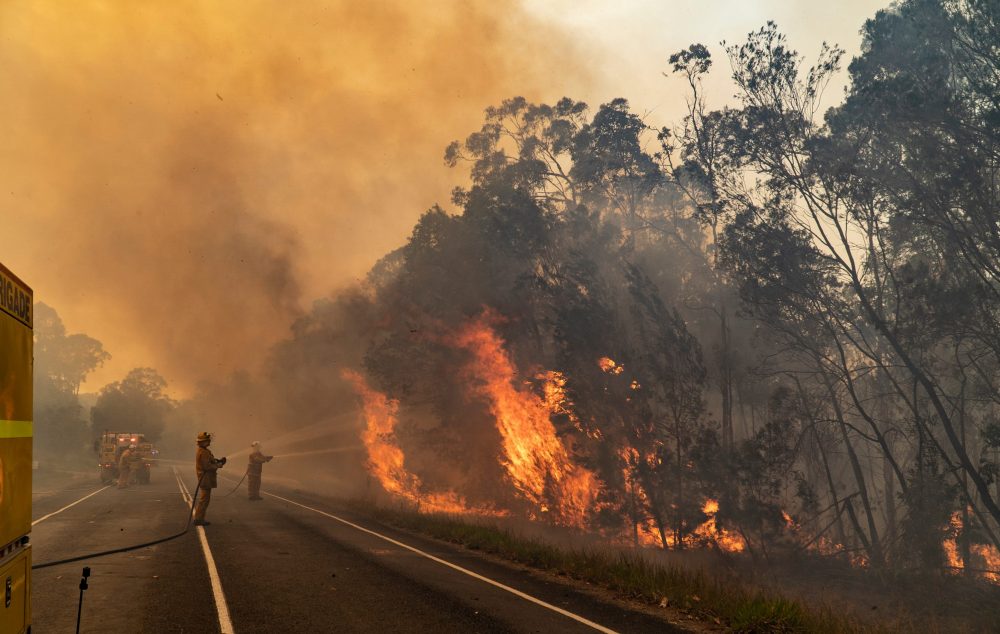Deciphering the Value of a Detailed BAL Report for Your Building
Deciphering the Value of a Detailed BAL Report for Your Building
Blog Article
How BAL Report Impacts Shrub Fire Defense Procedures
In the realm of bush fire security, the Building Assault Level (BAL) report stands as an important device that significantly affects the safety and strength of buildings in fire-prone areas - BAL Report. The effect of a BAL assessment extends much past mere documents; it offers as the cornerstone for identifying the ideal building standards and fire security procedures required to minimize the risks postured by bushfires. As communities grapple with increasingly severe fire periods, understanding exactly how the BAL record forms these protective actions becomes vital for builders, property owners, and policymakers alike
Understanding the Bushfire Attack Degree

Importance of BAL Report Assessment

Moreover, the BAL report analysis offers as a fundamental action in adhering to legal obligations and needs associated to bushfire defense. Neighborhood councils and authorities often mandate the entry of a BAL report as component of the planning and building authorization procedure to guarantee that buildings are effectively guarded against bushfire dangers. Failing to perform an extensive BAL record evaluation can cause inadequate protection actions, leaving residential properties susceptible to ravaging bushfire events.
Building And Construction Standards Based Upon BAL
A detailed understanding of the Bushfire Attack Degree (BAL) makes it possible for homeowner to carry out construction standards tailored to their certain risk profile. Building and construction requirements based upon BAL are crucial in mitigating the influence of bushfires on residential or commercial properties. The BAL rating classifies the prospective risk a home deals with throughout a bushfire on a range from BAL-Low to BAL-FZ (Flame Zone) Each BAL level represents details building demands outlined in the Australian Basic AS3959-2018 Building And Construction of Buildings in Bushfire-Prone Locations. Homes classified as BAL-Low may just call for standard actions such as getting rid of debris and keeping yards, while those in greater BAL groups require even more durable actions like coal displays, fireproof materials, and secured home windows. Complying helpful resources with these building and construction requirements not just improves the architectural durability of the building but also enhances the general safety and security of locals during a bushfire event. Consequently, homeowner must carefully consider their BAL ranking and abide by the corresponding construction standards to properly protect their homes and owners.
Carrying Out Fire Security Steps
With the structure of building and construction requirements based on Bushfire Assault Level (BAL) in position, the focus currently moves towards the useful execution of fire defense steps to strengthen residential properties versus bushfire threats. Executing fire security steps involves a combination of passive and energetic techniques to boost the durability of structures in bushfire-prone areas. Easy steps consist of utilizing fire-resistant building products, installing cinder guards on vents, securing voids in roofings and walls, and preserving a clear room around the property devoid of combustible plants. Active actions encompass having firefighting equipment readily available, such as hoses and water pumps, along see this website with developing a defendable area around the residential property by clearing plants and having a well-kept yard. Additionally, establishing a discharge plan and ensuring all locals are mindful of emergency treatments are crucial elements of effective fire security actions. By integrating both passive and active approaches, buildings can substantially reduce their vulnerability to bushfire cases and increase the security of passengers.
Safeguarding Residences Against Bushfires
Effectively guarding homes versus the damaging influences of bushfires needs a extensive and positive approach to fire protection measures. Property owners residing in bushfire-prone areas have to focus on the application of different strategies to improve their home's strength against wildfires. One fundamental element is developing a defensible space around the home by preserving a clear area devoid of combustible materials. This consists of frequently cutting plant life, eliminating dead plants, and ensuring a risk-free range between trees and frameworks. Mounting fire-resistant roof covering materials can likewise substantially reduce the threat of cinder strikes and direct fire contact. Additionally, sealing vents and spaces to protect against ash invasion, along with integrating fireproof windows and doors, can aid fortify the home's defense versus bushfires. Buying a trustworthy water resource, such as a properly maintained lawn sprinkler system or a committed water container, is critical for providing water throughout fire emergency situations - BAL Report. By embracing a proactive stance and integrating these safety actions, homeowners can considerably enhance their chances of safeguarding their homes against bushfires.
Verdict
In verdict, the Bushfire Strike Level (BAL) report plays a crucial function in identifying the required security actions versus bushfires. Executing fire security procedures based on the BAL record is essential in guarding properties from prospective bushfire dangers.
In assessing bushfire risk to buildings, understanding the Bushfire Assault Level (BAL) is a crucial component for carrying out effective defense procedures. In general, a clear understanding of the Bushfire Strike Level is vital for applying adequate security procedures and minimizing the influence of bushfires on buildings.

Report this page